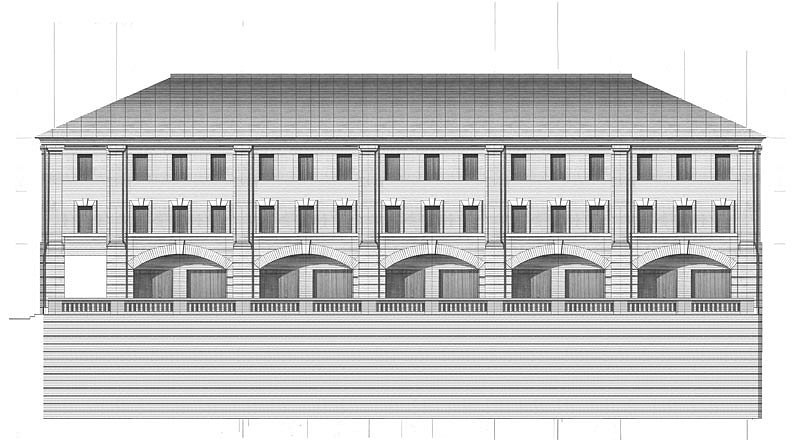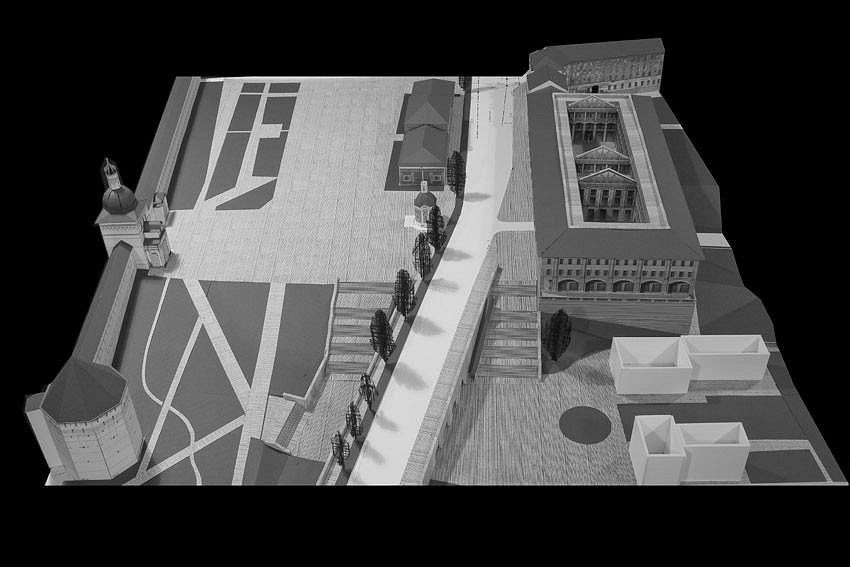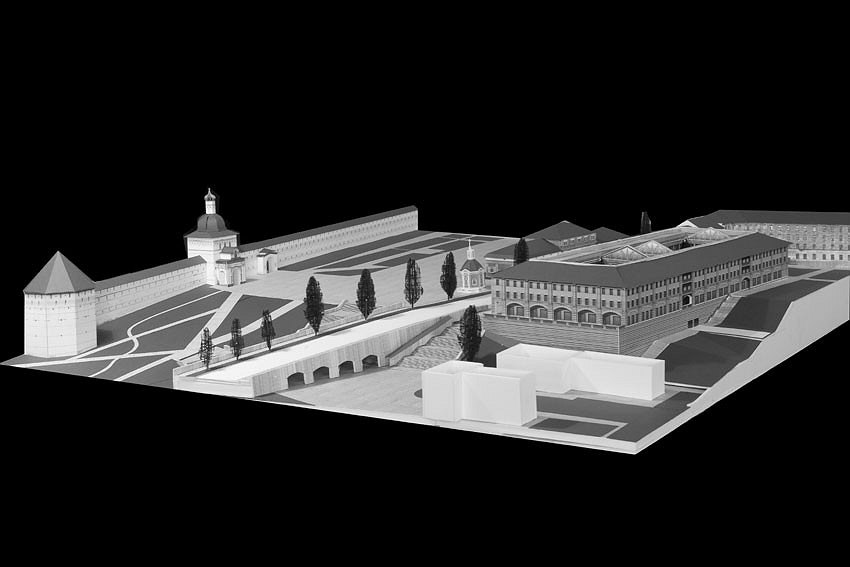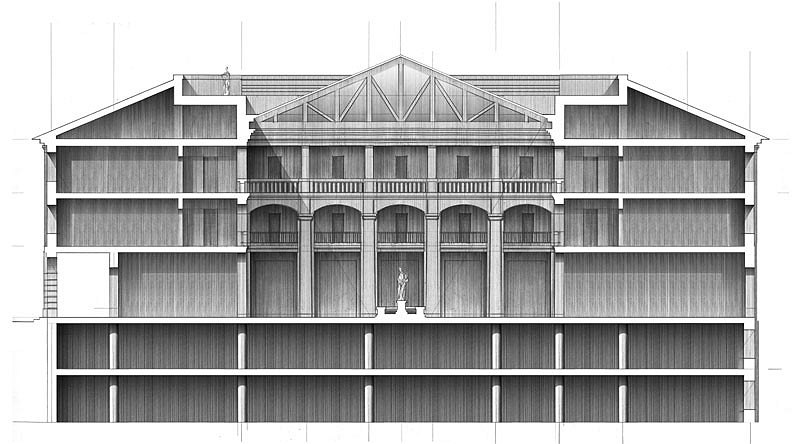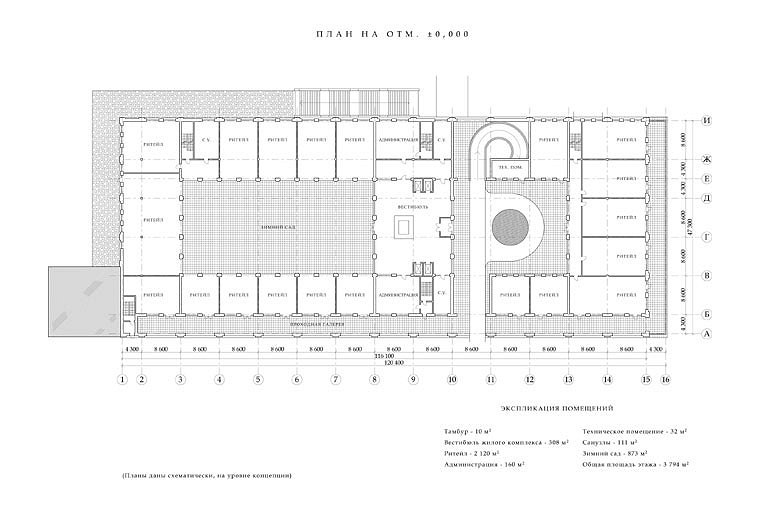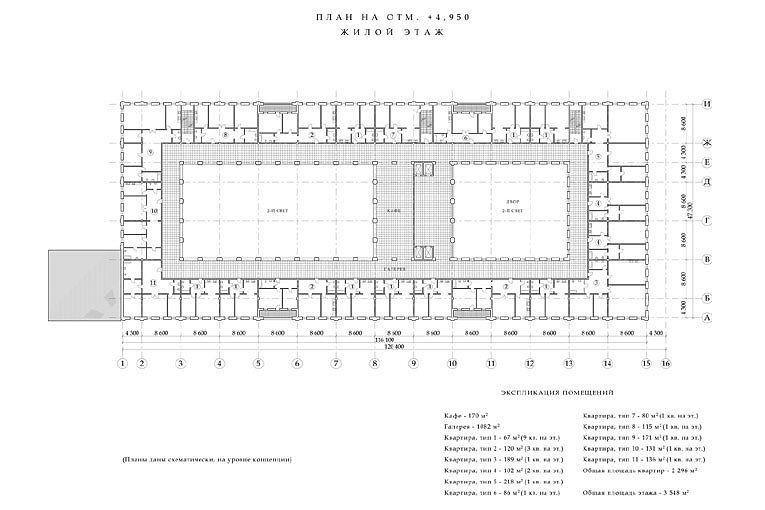“Mir” cinema is located between Krasnoi Armii avenue, Ovrazhny lane, Mitkina street and Karla Marksa street, right opposite to Svyato-Troitskya Sergieva Lavra, which is an architectural monument. According to the documents of design premise for the reconstruction project is full of restrictions: characteristic environment of the ensemble of Lavra can’t be disturbed, the height can’t be more than 10 meters (or 12, with), no tall fencing, no contrasting of architectural ideas concerning shapes, volumes, materials and colour. Well, not much for an architect. Except for Ilya Utkin.
Ilya Utkin completely transformed the image of the building constructed in 1970 and remained within the limits. Remarkably, facades are not lifeless and monotonous – their architecture reminds of old shopping arcades.
The building designed by Ilya Utkin has three storeys. Each façade is composed of a module. Module includes Tuscan abutments, between them there is an arch, on the ground floor. On the second level there are three windows with plain casing, on the third level there are three windows without casing. Most arches are glassed, only two of them are passages, one leads to the yard of the building and the other through the building and ends in Ovrazhny lane. Facades on Lavra and Mitkina street sides are the same, only they have a back gallery on the ground floor. Everything is simple, but not dull. Stylistically, this is more of Russian countryside classicism.
Ilya Utkin suggested improving of the infrastructure of the area. There is a considerable difference in relief - on the territory from Karla Marksa street up to Mitkina street it is 10 meters lower – and Krasnoi Armii avenue occupies the bridge. Or rather the traffic road with a dark passage like pedestrian passages under the highways in Moscow. Dark tunnel is made to pass from the Lavra to the opposite street, to a chapel of the 17th century, over the Sergiya spring existing beforetime, to car-parking and restaurants. At the both sides of the tunnel, tourists can by matreshka dolls, traditional babushka kerchief. Iliya Utkin suggested cleaning up the passage and areas around. At the both sides there will be placed wide escalators to get from the main square in front of the Lavra to the mentioned earlier tourist area.
As to functional component of the project. Along the perimeter there will be apartments of 11 types. Entrances are from the galleries encircling yard facades. The volume of public zone crosses the yard and visually divides it in two parts. There is a passage on the ground floor of the volume, connecting the sides of the inner yard, one part has a roof. Yard facades have plain design, as well as the front ones: arcades with Tuscan semi-columns, and in the centre of the roofed part Ilya Utkin placed a sculpture, a spaced dominant of the yard.
I remember, Ilya Utkin and I were talking, and he said something like, If a bastard destroys old houses, I am going to build the all over again. Looking at the modern project by Ilya Utkin I think that phrase might be his creative credo. In a way, his work today is a tribute to architecture of the past, an attempt to express nostalgia of the passed times, grief for the lost buildings. I know what he is talking about and Ilya Utkin’s architecture moves me deeply. So, reconstruction of the old cinema “Mir” can be considered as an apogees of the late, post-perestoika art work of Ulya Utkin. In reconstruction and renovation projects show an architect’s attitude to heritage, and Ilya Utkin proves most respectful attitude, and here it is the fullest.


